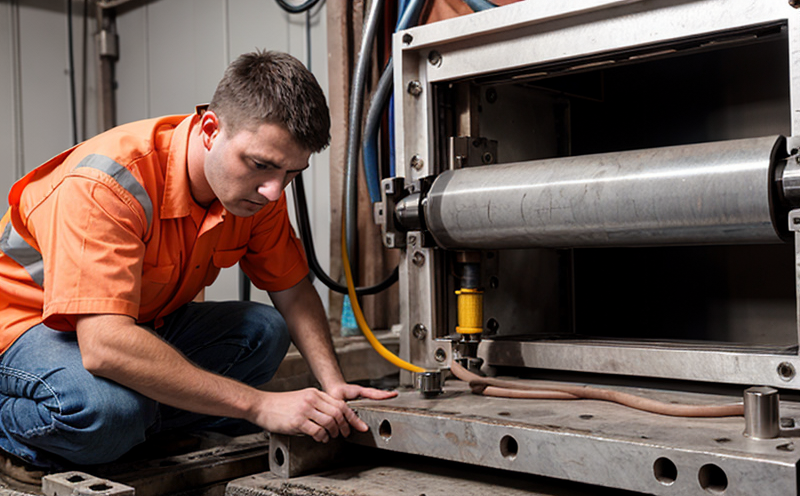EN 60598 1 Mechanical Safety Testing of Indoor Lighting Fixtures
The European standard EN 60598-1:2017 establishes the general requirements for indoor lighting fixtures, covering their mechanical safety aspects. This testing ensures that all components and assemblies are designed to withstand typical environmental stresses without compromising safety or performance. Our laboratory specializes in providing comprehensive mechanical safety tests according to this standard, ensuring compliance with regulatory requirements and enhancing product reliability.
The scope of EN 60598-1 includes the following key areas:
- Fixture stability
- Impact resistance
- Vibration resistance
- Thermal shock resistance
- Rewiring tests for lamp holders
For fixture stability, the test involves placing a specified load at various points on the luminaire to ensure it remains stable under these conditions. Impact resistance is assessed by dropping a heavy object from a defined height onto different parts of the luminaire. Vibration testing evaluates the luminaire's ability to maintain its structural integrity during repeated oscillations within a specific frequency range.
Thermal shock tests assess how well the fixture can handle rapid temperature changes, which may occur due to environmental conditions or operational variations. Rewiring tests check the robustness of lamp holder connections by subjecting them to repeated insertion and withdrawal cycles until failure occurs or specified limits are reached.
The mechanical safety testing process typically begins with thorough specimen preparation. This involves cleaning the luminaire according to standard procedures, ensuring all components are in their intended operational state before testing commences. During the actual tests, our experienced technicians use precise equipment calibrated to meet international standards like ISO 9001 and IEC 61439.
Once completed, we provide detailed reports outlining each test's results alongside recommendations for improvements if necessary. These reports serve as valuable tools not only for compliance purposes but also for continuous improvement in product design and manufacturing processes.
By adhering strictly to EN 60598-1 guidelines during development stages, manufacturers can preemptively address potential issues early on, leading to more robust products that meet stringent safety standards. This proactive approach helps protect consumers from hazards associated with poorly designed or manufactured fixtures while fostering trust among end-users.
In summary, mechanical safety testing according to EN 60598-1 plays a crucial role in safeguarding user health and well-being by ensuring indoor lighting fixtures are safe and reliable under normal operating conditions. It provides manufacturers with vital information about their products' performance characteristics, enabling informed decision-making throughout the product lifecycle.
Why It Matters
Mechanical safety testing according to EN 60598-1 is essential for several reasons. Firstly, it protects consumers by reducing the risk of accidents caused by unstable or structurally deficient lighting fixtures. Secondly, compliance with this standard enhances brand reputation and market competitiveness, demonstrating a commitment to quality and safety.
Additionally, successful passage through these tests can expedite certification processes, opening up new markets for manufacturers who meet international standards. Finally, adherence to such regulations fosters innovation within the industry by encouraging continuous improvement in product design and manufacturing practices.
In essence, rigorous mechanical safety testing according to EN 60598-1 is not just a requirement; it's an investment in both consumer trust and long-term business success.
Industry Applications
- Hospitality & Commercial Buildings
- Residential Lighting Design
- Public Spaces & Outdoor Installations
- Corporate Offices and Educational Facilities
The results of mechanical safety testing can be applied across various sectors, including hospitality establishments where reliability is paramount. By ensuring that lighting fixtures meet the specified criteria outlined in EN 60598-1, hotels and restaurants can provide guests with a safe environment while enhancing their reputation for quality service.
Similarly, residential developers benefit greatly from incorporating tested products into their projects, as this ensures durability and longevity of fixtures over time. Educational institutions also prioritize safety when selecting lighting solutions, making mechanical testing an integral part of the procurement process.
Customer Impact and Satisfaction
Achieving compliance with EN 60598-1 has a direct positive impact on customers by fostering confidence in the safety and quality of lighting products. Satisfied customers are more likely to recommend these fixtures to others, thereby increasing market share for manufacturers.
Furthermore, meeting regulatory requirements such as those stipulated in this standard demonstrates a company's dedication to excellence, which is highly valued by stakeholders ranging from end-users to investors. This commitment translates into greater customer loyalty and long-term partnerships within the industry.





